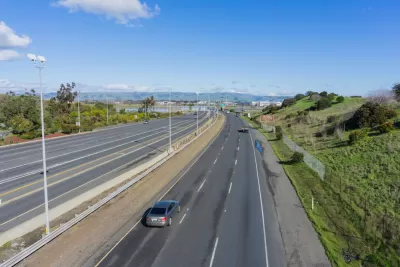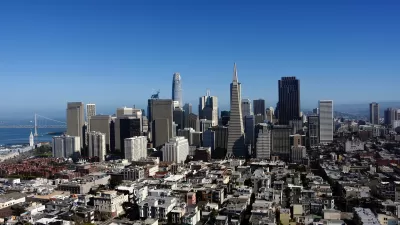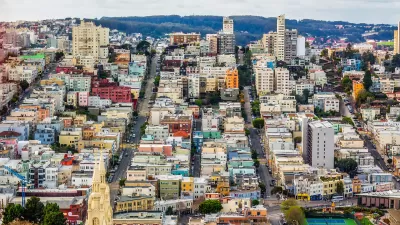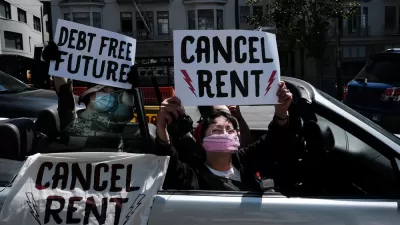Do shortages of infrastructure justify restrictive zoning?

One common argument against new housing is the "infrastructure" argument. The argument runs something like this:
- My city already has crowded roads/transit/unspecified infrastructure.
- Therefore, If we allow new people to live here, we will not have enough infrastructure to support them.
- Therefore, we should not permit anyone to build new housing in my city.
This syllogism suffers from a number of flaws. First of all, the initial assumption is based on an assumption that the city’s most pressing need is something called "infrastructure"—a broad, vague term. Not only is the concept of infrastructure unclear, it is also unclear whether any given city has enough of it. For example, how many roads are enough? If your goal is to have every single street dominated by free-flow traffic, no city will have enough roads. Similarly, if your goal is to have a seat or two for every bus or train rider, that goal will never be met in a healthy transit system. In my experience, cities with strong public transit (such as New York, Chicago and Toronto) often have more riders than seats; by contrast, when I lived in car-dominated cities like Jacksonville and Kansas City, there were always more than enough seats to go around. But surely no sane rider would prefer Jacksonville’s buses (which usually shut down around 9 pm) to New York’s slower, more crowded buses. Perhaps one might claim that the city needs more schools for children, but because American birthrates have plunged over the past decade, this argument no longer seems plausible to me.
The second assumption (that infrastructure cannot support new residents) is based on the idea that infrastructure will be less awful if high rents drive people out of the city. For certain types of infrastructure this may be true: roads tend to be uncongested in declining Rust Belt cities. On the other hand, public transit does require regular infusions of public funds—but these infusions tend to disappear in a declining city, because fewer residents mean fewer riders, which in turn means less revenue. So if high prices crowd out people, then ridership goes down, which means less money for infrastructure improvement, not more money.*
If this were not the case, we would find that major transit improvements were most common in stagnant or declining cities. But in fact, new light rail systems have begun in six central cities during the 21st century (Charlotte, Houston, Minneapolis, Norfolk, Seattle and Phoenix)**—and every single one of these cities has gained population since 2000. Admittedly, many growing cities have failed to add such infrastructure; however, it might mean something that no declining city has added anything more useful than Cincinnati's downtown streetcar or Cleveland's bus rapid transit.
More importantly, failure to build housing also affects infrastructure. Not everyone priced out of cities by high housing costs moves elsewhere; because moving to a new city can cost thousands of dollars, people priced out of cities often become homeless instead of moving to a cheaper city. As a result, cities with low levels of housing construction and high rents, such as New York and San Francisco, tend to have high levels of homelessness. Homelessness in turn imposes costs on infrastructure; if a city with lots of homeless people, its leaders may seek to alleviate Pl human misery by building homeless shelters or public housing. A more cold-hearted city may choose to just let the poor sleep in the streets and parks—but this causes parks and sidewalks to become less attractive to the rest of the city’s residents, thus degrading another type of infrastructure. In other words, increased population may be bad for some infrastructure- but so is homelessness.
The third assumption is based on the idea that crowded subways or roads or schools justify exclusionary zoning. But it is by no means obvious to me that slight increases in traffic or subway congestion justify the ill effects of high housing prices. I would happily have a few more commuters on my train if it kept rents from rising.
More importantly, exclusion is a "beggar thy neighbor" policy—people who are forced out of New York or San Francisco have to move somewhere, and that somewhere in turn is just as burdened by new residents as New York or San Francisco would be.
It could be argued that because the most expensive states are uniquely incompetent, these states are far less capable of building new infrastructure than "receiving" states. Therefore (so the argument runs) it is a perfectly fine thing if anti-development regulation causes mass migration to Texas or North Carolina. For example, New York and California have cumbersome environmental review systems that slow down all forms of construction, while Houston builds beltway after beltway.
Unfortunately, such infrastructure may breed negative side effects. Houston's beltways may warm the hearts of exurban real estate developers—but also ensure that people move further and further out from the city’s older neighborhoods, thus causing more and more driving, which leads to more and more greenhouse gas emissions and other forms of environmental degradation. And because Houston’s hot, humid climate requires lots of air conditioning which in turn uses lots of electricity, even a car-free Houston creates far more environmental damage [pdf] than development in temperate cities such as Portland or San Francisco. So if high housing costs shift a million people from California to Texas, we are all a bit worse off—even if those new Texans spend a little less time stuck in traffic.
Such population shifts also create non-environmental harms: if people who would be most beneficially employed in New York or San Francisco are forced to move to smaller cities by high housing costs, they might not be as productive. To take an admittedly fanciful example: suppose Dr. X would, housing costs being equal, live in a huge city with lots of other scientific researchers. Being in the same city as other scientists might make X more productive—perhaps productive enough to cure some form of cancer, or to invent an effective form of geo-engineering that stops climate change. But if X lives in a smaller city, X may interact less with other researchers, and not do anything quite so useful.
In sum, all of the assumptions behind "infrastructure NIMBYism" are questionable. I concede that our most expensive cities could use a little more infrastructure- but so could every other city. More importantly, these inadequacies do not justify policies that raise housing costs to exclusionary levels.
*A narrower, more plausible argument is that certain parts of a city have inadequate infrastructure—for example, that some of New York's subway lines are more crowded than others. But as this article points out, planners can solve this problem by redistributing service to the most busiest subway lines.
**In addition, there are several light rail systems that do not serve their region’s primary central city: New Jersey’s Camden-to-Trenton River Line, the Hudson-Bergen light rail system that begins in Jersey City, Contra Costa and Oceanside light rail, and Tacoma light rail.

Alabama: Trump Terminates Settlements for Black Communities Harmed By Raw Sewage
Trump deemed the landmark civil rights agreement “illegal DEI and environmental justice policy.”

Planetizen Federal Action Tracker
A weekly monitor of how Trump’s orders and actions are impacting planners and planning in America.

The 120 Year Old Tiny Home Villages That Sheltered San Francisco’s Earthquake Refugees
More than a century ago, San Francisco mobilized to house thousands of residents displaced by the 1906 earthquake. Could their strategy offer a model for the present?

LA’s Tree Emergency Goes Beyond Vandalism
After a vandal destroyed dozens of downtown LA trees, Mayor Karen Bass vowed to replace them. Days later, she slashed the city’s tree budget.

Sacramento Leads Nation With Bus-Mounted Bike Lane Enforcement Cameras
The city is the first to use its bus-mounted traffic enforcement system to cite drivers who park or drive in bike lanes.

Seattle Voters Approve Social Housing Referendum
Voters approved a corporate tax to fund the city’s housing authority despite an opposition campaign funded by Amazon and Microsoft.
Urban Design for Planners 1: Software Tools
This six-course series explores essential urban design concepts using open source software and equips planners with the tools they need to participate fully in the urban design process.
Planning for Universal Design
Learn the tools for implementing Universal Design in planning regulations.
Ada County Highway District
Clanton & Associates, Inc.
Jessamine County Fiscal Court
Institute for Housing and Urban Development Studies (IHS)
City of Grandview
Harvard GSD Executive Education
Toledo-Lucas County Plan Commissions
Salt Lake City
NYU Wagner Graduate School of Public Service






























